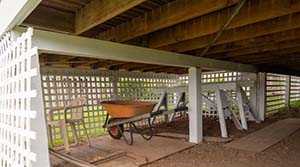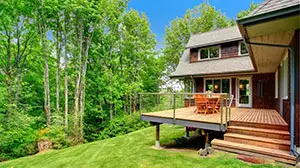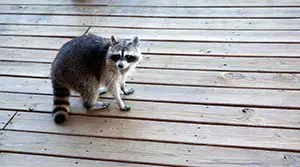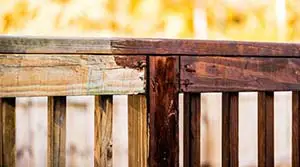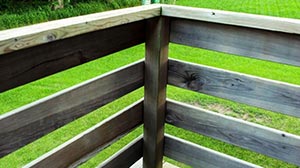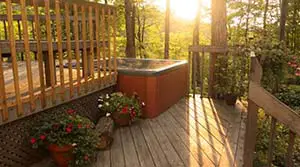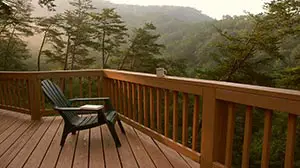
The transition of seasons from summer to autumn is when wasps are more irritable and annoying. That is because they are starving, and the fact that people are wining and dining on “sweet” stuff makes them lose their minds as they try to get a taste of it.
In that case, one might wonder how you can keep wasps away from nesting all over their porches. Here are five ways to do so:
- Destroy their nests when they are just beginning to settle before they hatch
- Use of chemical sprays to kill them
- Trapping them into containers of diesel as they are attracted to the smell
- Eliminating availability of food
- Seal all cracks and nooks that they may find habitable
Wasps are kleptoparasitic: meaning that they sneak in and hide their eggs amid the host’s eggs, and when they turn into larvae, they poison the entire host’s family and take over the nest. So what brings them into the human habitat? Let us find out.
The Wasps & Their Love for the Human Habitats (How to Finish Them Off)
There is nothing as beautiful as the universe is kind enough to allow us to enjoy time outdoors, soaking in the sun and letting the evening’s cool breeze caress our faces.
But there is always something fixated on ruining this perfect and peaceful setting. Animals, insects, and what have you. Today, we will discuss the wasps.
Wasps are unique insects whose peculiar lifestyle rotates around seasons, the shape of their body, diet, and the importance of a larva in the life of the worker wasp.
Wasps are inherently a strange and fascinating family of insects. While some live and thrive in a colony, most are solitary. Other times, some wasps are pollinators. However, the majority of these creatures are predators.
For one, the queen wasp is the only one in her colony who will live through the harshness of winter to bring forth a generation of strictly worker wasps in the spring who will work to feed the masses of in-coming age;
- She lays eggs in cells present in the wax similar to that of bees.
- It is fed by worker bees who depend on the processed food spit up for their meals as a larva.
- It is then sealed off as it transforms into a pupa.
- It leaves the cell as a mature wasp, ready for the responsibility.
Because the wasp, the bee, and hornets almost look the same, here is how to tell the difference;
| Type | Description | Life Span |
|---|---|---|
| Honey bee | – Social and mainly pollinators. – They make giant hives that produce honey. – Look hairy, and they are not aggressive unless attacked. | 30-60 days |
| Hornet | – Larger than wasps and sometimes prey on honey bees for food or just for fun. – Nests underground or the hollow of trees. | 12-22 days |
| Wasp | – Primarily social – They live in colonies make papery nests on trees or the eaves of houses | 12-22 days |
What Brings Wasps to Your Comfort Zone?
For wasps, their lives begin in the last days of spring when the colder climate paves the way for warmer seasons.
These colonies or even solitary wasps thrive amidst humans for the following reasons;
- Shelter
- Food
1. Ideal Spot for Shelter
Have you ever wondered what could be the reason for wasps to make your deck or porch their home?
The truth is that it connects to nothing extraordinary other than the fact that your deck or porch are cozy places shielded away from harsh weather conditions, which allow the insects to thrive comfortably.
Wasps love warmth, which is why they build nests using ground wood fiber mixed with water or saliva and allowed to dry.
Wasps are intricate architects who constantly remodel their nests to take the colony’s growing number. For instance, weathered wood is often a considerable construction material for wasps.
The result is an intriguing paper-looking outcome that not only provides warmth but is also easy to remodel and expand with time.
Another contributing factor is that the underside of the deck’s roof provides wasps with a horizontally positioned spot where they can comfortably hang their nests and grow their colony.
2. Presence of Food
Even more important than shelter is the availability of food, which is a deciding factor in pitching camp.
Food is life, eat first, they say, and that is what the wasps are trying to do. In summer, wasps seem angry and relentless because they are hungry.
Human habitats are full of food, especially in the summer. Trash cans and thriving gardens are where the secret lies. Most insects have a strong sense of smell, as do wasps.
While trash bins invite flies and so forth, gardens breed caterpillars and the like, bringing wasps that prey on invertebrates for good proteins for the larva.
What is the Connection Between the Adult Wasp & Larva?
Strangely enough, adult worker wasps cannot chew, swallow and digest food for themselves due to how narrow their abdomens are.
In this case, they depend on the larva, who break the food down by digesting and converting the rich protein invertebrates then spitting it out for the worker bees to partake.
At some point, when the colder season slowly approaches, the queen stops laying eggs, and the last generation of larvae transitions into pupa and finally full-fletched wasps.
Their world or colony becomes unbalanced as it now bears only grown wasps whose role is typically to feed larvae and protect the nest.
The problem now is that there is no food because there is no larva to feed or help break down food which they, in turn, feed on.
What is the Alternative Diet for Wasps?
Nature forces adult workers to seek alternative food sources when the queen stops laying eggs, and the average life cycle is cut short.
That is why they suddenly begin bothering humans whose time to party and merry outdoor time coincide with the period when wasps are hungry for starch.
Because flowers offer starch-filled nectar, wasps make that another food source, helping pollinate flowers in the process.
Just like their lives begin with the arrival of warmth, it ends when the cold sets in as the season of succulent fruits and feasting of humans come to an abrupt end.
Humans seek refuge indoors while their queen hibernates to preserve herself for when the season is right again.
No more eggs. No more larva.
Sadly, the worker wasps are left starving in the cold as there is no food to scavenge from the porches and decks, no insects to prey on, and no larva to help them process the food.
How Do I Keep Wasps From Building Under My Deck?
If not for their irritable intrusive behavior, wasps would be great to have around our homes because they balance the ecosystem by eliminating the growing number of soft-bodied invertebrates found within our homes and in our gardens.
These insects include the greenfly, which hovers around our trash cans, and caterpillars, who vigorously destroy crops and flowers.
But since there are pesticides to take care of the lower group of bugs in this hierarchy, the wasp is now deemed a nuisance who we would love gone from our environment.
The main reason to encourage wasps to camp on your deck or porch is if they manage to nest in the first place.
Here are life-saving tricks and hacks to keep wasps off your deck;
- Destroy their nests when they are just beginning to settle before they hatch
- Use of chemical sprays to kill them
- Trapping them into containers of diesel as they are attracted to the smell
- Eliminating availability of food
- Seal all cracks and nooks that they may find habitable
1. Destroying Wasps Nests
This simple task is very efficient as it will render either lone wasps or an entire colony homeless.
Destroying their nest’s signals that their presence is unwanted, and they should seek refuge elsewhere.
The best time to do this is when the wasps lay the foundation for their elaborate home, mainly in June, when every other wasp is gaining momentum for the season.
This perfect time will save you the drama of having to deal with too many rebelling wasps who have warmed up to the idea of making your porch their home as well.
Keep in mind that a colony of wasps carries hundreds of wasps who multiply rapidly and become thousands in no time.
Wasps wake up early as activities are myriad, which keep them active the rest of the day, and they only slow down when the sunsets.
As the homeowner, this is the perfect time for you to descend on their nests as they are spent and have less energy for an energy pact encounter.
2. Pesticide Sprays
There is always the possibility that you saw the wasp do a home inspection and watched them build. Still, you downplayed their presence which you now regret as it has become apparent that it is impossible to stand their pestering sight.
Wasps sting and sting painful, provoked or not. In numbers, they thrive, and finding a meaningful remedy that will get them off your porch might be the only solution.
Wasps are just like any pests, and pesticide sprays that will knock them off are available in the market. These include products such as;
- Spectracide wasps and hornet killer
- Bengal wasps and hornet killer
- Raid wasps and hornet killer
- Enforcer wasps and hornet killer
- Terro wasps and hornet killer
3. Trap Wasps Using Diesel Fuel
Sometimes, the secret lies in not driving them away but trapping them. There are unfriendly measures because trapping them means you will kill them or wait for them to die in captivity.
Introducing substances whose smell wasps cannot resist is a brilliant idea as long as these substances are generally friendly to humans.
For example, smells like a diesel drive were insane with uncontrolled cravings.
To have this idea working, place a container of diesel near a wasps nest and watch them scramble to get in, and because every other wasp is racing to get in, getting out for the ones who are already inside will be a problem.
Satisfied with the number of wasps trapped, you can use that as your cue to seal the opening, or you can engage a container with a trapping entry—one way in and no way out.
You can apply this method using different containers until all the colony is trapped. The downside of this plan is that it requires patients to pull it successfully.
4. Eliminate Foods
The grown worker wasp is dependent on the larva for sugar-rich processed food. For this reason, they cannot consume food like any other insect due to their slender figures that can handle food that is not processed and is rich in sugar necessary for energy.
They are responsible for the feeding and protection of the colony, which is why they require high-energy food.
Their primary source of food is other bugs such as flies and caterpillars. These are insects that are abundantly present in many homes and gardens. For example, trash bins and cans store leftovers awaiting collection for damping.
Because they are smelly, flies will congregate to feed, and this phenomenon attracts insects of prey such as the wasps.
Occasionally and mainly when larvae are not present in the lives of wasps, they will in turn feed on sugary or succulent fruits that are fallen and rotten in the farm or fruits out of trash cans as a substitute to the food they are missing.
Because trash is common for every feeding household, the only thing to do is ensure that food leftovers are well wrapped in trash papers to eliminate emanating smells that attract flies and other bugs to come feasting.
5. Seal Every Crack & Nook
Solitary wasps can perfectly settle in cracks and nooks. You probably seek a wasp or two but cannot seem to fathom where they nest because none is visible.
The probability is that they found a tiny space on your porch, and that is where they settle. Find the cracks or nooks and seal them off by stuffing material or using a sealant.
What Deters Wasps From Building Nests?
Part of wasp infestation problem solving is thinking about the future and taking measures.
As such, when the sun is finally out, an elaborate plan is set out rolling so that when the swarms of wasps come by, they will declare your yard unfit, just like the blood smeared on Jewish doors slaving in Egypt.
So what are some of the things that would make your home unfit for wasp breeding?
1. Planting Wasps Repelling Plants
Amazingly, most flowers and vegetables emitting strong mint smells are repulsive to insects, birds, and animals.
It includes mints such as eucalyptus, thyme, and peppermint.
Because you can decorate the porch using flower pots, it would do your home justice to plant these mints amongst your flowers for the greater good.
Not only will it keep away unwanted guests in the form of animals, but it will leave your outdoor space smelling heavenly.
Wasps love sheltered places. If your deck or porch has no crack and crooks where wasps get attracted, they will indeed move on to the neighboring homestead.
Not only are wasps afraid of the elements, but just like they prey on other insects, so do other more enormous insects, such as praying mantis and crickets. It also includes birds such as mockingbirds, sparrows, and weaver birds.
So to seek shelter, the wasps ensure that their new environment is devoid or safe from animals that would potentially harm them and their eggs.
3. Lack of Food
Availability of food is a motivating factor for wasps to thrive anywhere. They need plenty of food to generate energy that helps sustain their numbers.
If their food source is eliminated or cut down, they naturally feel threatened and look for greener pastures. The same for water; water is life. Like any other living thing, Wasps need water to build and break their food.
If you take it away, they will indeed move elsewhere as they love being near supplies, unlike bees who can source the same from far.
Some Facts About Wasps
If you were more curious about wasp behavior, here are some facts you may not have known about them:
- They do not fly well; that is why when the temperature drops, the entire colony of worker wasps dies.
- They have minimal or no hair at all on their bodies.
- They are naturally aggressive and sting without provocation.
- They act as natural pest control solutions on human habitats.
- They eat sugary foods and succulent fruits from backyards.
Conclusion
A world or at least a summer without wasps buzzing all around us would be perfect, but would it be for the ecosystem?
Regardless, getting rid of wasps that have settled can turn into a messy affair that is unsafe for you or your household. If you think that you will not handle it or the wasps are too many, it would be best to let professionals take your case for you.
Sources

